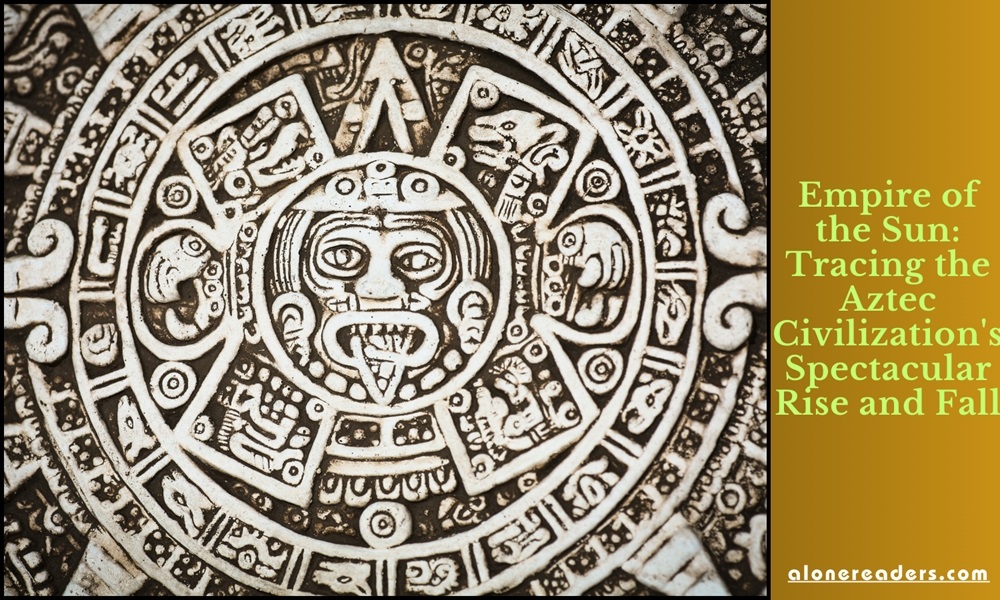
The Aztec Empire, known for its immense power and sophisticated culture, was a beacon of strength in Mesoamerican history. This article delves into the empire's origins, its unique societal structure, the zenith of its power, and the factors leading to its abrupt demise.
The Aztec civilization began with the migration of the Mexica people, who later became known as the Aztecs, into the Valley of Mexico in the 13th century. Initially, they were a nomadic tribe from Northern Mexico, facing challenges from established tribes in the region.
Settling in Tenochtitlan: Foundation of a Capital
The pivotal moment in Aztec history was the founding of Tenochtitlan in 1325. According to legend, the Mexica were guided by their god Huitzilopochtli to find an eagle perched on a cactus, devouring a snake – a sign to establish their city on that site. This city, located on an island in Lake Texcoco, later became a large and sophisticated urban center, the heart of the Aztec Empire.
The Aztec society was highly stratified and organized. At the top was the emperor, known as the 'Huey Tlatoani', who wielded absolute power. Nobles, priests, and warriors formed the elite class, while merchants, artisans, farmers, and slaves made up the lower classes.
Religion and Culture: The Pillars of Aztec Life
Aztec religion was polytheistic, worshipping gods like Quetzalcoatl and Tezcatlipoca. Human sacrifices were integral to their religious practice, believed to appease the gods and ensure cosmic balance. Their cultural achievements in astronomy, mathematics, and the arts were remarkable, with the Aztec calendar being a notable innovation.
Under leaders like Montezuma I and Ahuitzotl, the Aztec Empire expanded through military conquests and strategic alliances. The empire was a loose network of tributary states, with Tenochtitlan, Texcoco, and Tlacopan (the Triple Alliance) at its core, controlling a vast area in central and southern Mexico.
Economy and Trade: The Backbone of the Empire
The Aztec economy was robust, based on agriculture, trade, and tribute from conquered regions. Maize, beans, and squash were staple crops, while markets like Tlatelolco were bustling trade centers. The intricate system of chinampas (floating gardens) showcased their agricultural ingenuity.
The arrival of Spanish conquistador Hernán Cortés in 1519 marked the beginning of the end for the Aztec Empire. Initially welcomed by Emperor Montezuma II, the Spaniards quickly turned hostile, capitalizing on internal dissent and forming alliances with other indigenous tribes resentful of Aztec rule.
The Siege of Tenochtitlan: The Empire's Last Stand
After Montezuma's death, the Aztecs rebelled against the Spaniards, leading to the brutal Siege of Tenochtitlan in 1521. Despite fierce resistance, the combination of Spanish military technology, indigenous alliances, and smallpox decimated the Aztec forces, culminating in the fall of Tenochtitlan and the end of the Aztec Empire.
The fall of the Aztec Empire marked a significant moment in world history, leading to the establishment of New Spain and the fusion of indigenous and Spanish cultures. Today, the Aztecs are remembered for their architectural marvels, like the ruins of Tenochtitlan, their rich cultural contributions, and the resilience of their society against overwhelming odds.
The story of the Aztec Empire serves as a powerful testament to the complexities of human civilizations. It reminds us of the transient nature of power and the enduring impact of cultural and societal achievements. The Aztecs' rise and fall offer valuable insights into the dynamics of empire-building, the interplay of culture, religion, and politics, and the irreversible changes ushered in by the collision of worlds.